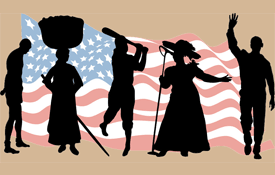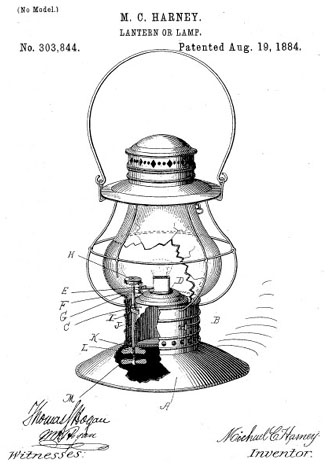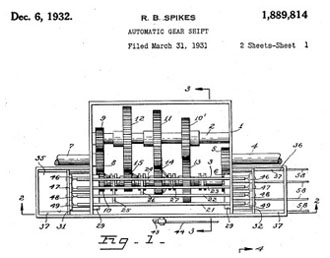0 10 Top Technologies Created by Ingenious Black Inventors
- Inventors
- by Hugh Smith
- 02/06/2008

Here are 10 top technologies created by important black inventors. We salute them all during black history month.
1) Fire extinguisher (aero-foam) - Dr. Percy L. Jullian
Dr. Percy L. Julian, (1899-1975), elevated the quality of American life with many discoveries through his research in chemistry.
Dr. Julian earned his Masters Degree at Harvard in 1923, and his Ph.D. at the University of Vienna in 1931.
During World War II, from a soybean protein, he developed a life saving, fire-fighting foam used by the U.S. Army and Navy.
His resulting fire extinguisher was used to put out gas and oil fires.
Dr. Julian also developed low cost cortisone to treat arthritis. He developed drugs to treat rheumatic fever, and glaucoma.
2) Electric lampbulb - Lewis Latimer
New York City native Lewis H. Latimer, (1848-1928), invented and patented the first electric light bulb with a carbon filament (March 21, 1882).
He joined the Thomas A. Edison Company in 1886. Edison later developed the carbon filament into the modern light bulb.
Latimer is credited with publishing the first electric lighting system textbook.

3) Lantern - Michael C. Harney
Michael C. Harney made significant improvements to wicks, and was granted a patent for a lantern/lamp on August 19, 1884.
The St. Louis, Missouri resident created a wick raising device to improve the efficiency of the lantern.
4) traffic light - Garrett Morgan
Garrett Morgan lived in Cleveland, Ohio when he was granted U.S. patent # 1,475,024 on November 20, 1923 for the three-way traffic signal.
He patented a three-armed signal mounted on a T-shaped pole that indicated "stop" and "go" for traffic in two directions.
Morgan also had another signal for stopping traffic in all directions before the stop and go signals changed. This is similar to today's yellow light.
General Electric bought Morgan's patent for $40,000, and his traffic management device was used throughout North America until it was replaced by the red, yellow and green-light traffic signals currently used around the world.
5) Gas mask - Garrett Morgan
Garrett Morgan also invented the gas mask a decade earlier in 1912, (U.S. patent 1,113,675 issued in 1914).
His mask was used during World War I to protect soldiers from chlorine gas fumes.
 6) Automatic gear shift - Richard Bowie Spikes
6) Automatic gear shift - Richard Bowie Spikes
On December 6, 1932, Richard Bowie Spikes received patent # 1,889,814 for an automatic gear shift which improved transmission design in cars.
7) Gamma-electric cell - Henry T. Sampson
Henry T. Sampson, of El Segundo, California, along with Dr. George H. Miley received United States Patent # 3,591,860 on July 6, 1971, for using a gamma-electric cell for producing a high-output voltage from a source of radiation.
8) Air conditioning unit - Frederick McKinley Jones
 Frederick McKinley Jones of Minneapolis, Minnesota received several U.S. patents for air conditioning technology.
Frederick McKinley Jones of Minneapolis, Minnesota received several U.S. patents for air conditioning technology.
This particular patent, # 2,336,735, granted December 14, 1943, was given for a compact and removable portable cooling unit that could easily be placed at the top of compartments on trucks and in railroad cars.
9) Thermostat control - Frederick McKinley Jones
Jones won another patent on February 23, 1960, for a thermostat that could regulate refrigeration.
10) Paints, stains, and cosmetic creams - George Washington Carver
George Washington Carver (1864-1943) was born in Missouri in the closing days of the Civil War. He rose from slavery to become the first nationally known African American scientist.
In 1896, Booker T. Washington selected the then young graduate student Carver, (who at the time was the only black American with advanced training in scientific agriculture), to head the newly created agricultural department at Tuskegee Institute.
Dr. Carver remained at Tuskegee for nearly 50 years. His research work with various fruits, vegetables, and legumes, most notably the peanut, commanded international attention.
On January 6, 1925, Dr. Carver was granted U.S. patent # 1,522,176 for a process that produces a cosmetic cream made from peanuts.
Carver describes his creation in the patent as a "vanishing cream of any desired or usual tint."
Two years later on June 14, 1927, Carver received U.S. patent # 1,632,365 for the process of producing paints and stains from clays.
His plan was to use clays of different colors found in different parts of the USA combined with his patented process "for treating wood or other materials."